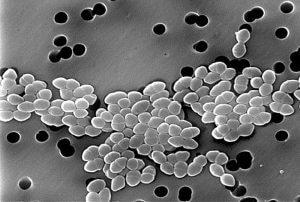
A new PLoS One publication cites the use of SMRT Sequencing to clarify the transmission path of infection in a transplant recipient. This work is an excellent example of the clinical utility offered by long-read PacBio sequencing.
The project was spurred by the frustrating inability to distinguish between hospital-acquired infections and donor-to-recipient infections through solid organ transplants. Scientists and clinicians from the Icahn School of Medicine at Mount Sinai and the University of Texas Medical School teamed up to apply advanced sequencing technologies in the case of a liver transplant recipient infected with vancomycin-resistant Enterococcus. In their report, lead author Ali Bashir, senior author Shirish Huprikar, and collaborators describe the use of whole genome sequencing to pinpoint the likely means of infection.
The scientists note that cultures taken during the donor’s hospitalization prior to death were negative for Enterococcus until days after the transplant occurred. They analyzed bacterial samples from the donor, the recipient, and hospital isolates collected at the same time using SMRT Sequencing technology and other methods. “Automated de novo construction of high-quality bacterial genomes using long-read whole genome sequencing (WGS) is a powerful tool that can aid in donor transmission epidemiology,” they write.
The resulting Enterococcus genome assemblies “were highly contiguous; in all cases, the assemblies contained fewer than 10 contigs with the largest contig representing more than 50% of the total genome length,” the scientists report. They produced a phylogenetic tree for the samples and found that the bacterial genomes collected from donor and recipient were most closely related. However, other types of analysis — such as multilocus sequence typing and pulse-field gel electrophoresis — generated more ambiguous results. “Only the full de novo assembly was able to clarify the unique structural differences between the donor and recipient isolate,” Bashir et al. report. “Our data suggest that WGS may be increasingly necessary to unambiguously confirm transmission for structurally mutable genomes.”
Because long-read sequencing is uniquely able to resolve large structural elements, the scientists suggest that it will become more commonly used for studies like this one. “We expect that WGS and assembly of pathogen genomes will be increasingly important not only for understanding pathogen biology and evolution, but also become a routine and essential tool for investigation of potential organ transplant transmissions in many settings,” they conclude.
March 27, 2017 | General